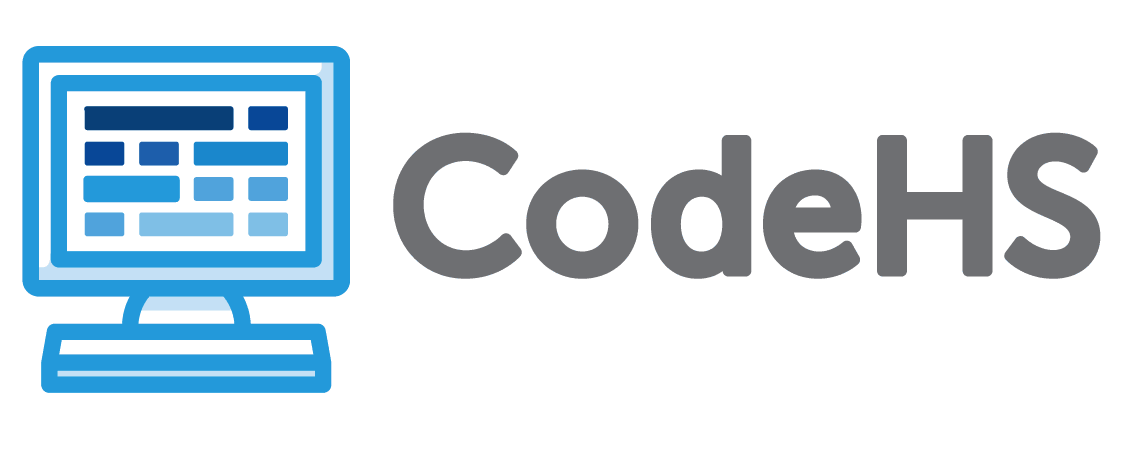| CS.AT.1 |
Use lists to simplify solutions, generalizing computational problems instead of repeatedly using simple variables. |
Lessons
|
| CS.AT.2 |
Systematically design and develop programs for broad audiences by incorporating feedback from users. |
Lessons
|
| CS.AT.3 |
Create prototypes that use algorithms to solve computational problems by leveraging prior student knowledge and personal interests. |
Lessons
|
| CS.AT.4 |
Use effective communication and accurate computer science terminology to explain problem solving when completing a task. |
Lessons
|
| CS.DA.1 |
Create computational models that represent the relationships among different elements of data collected from a phenomenon or process. |
Lessons
|
| CS.DA.2 |
Utilize data to answer a question using a variety of computing and data visualization methods. |
Lessons
|
| CS.DA.3 |
Use data analysis tools and techniques to identify patterns in data representing complex systems. |
Lessons
|
| CS.NI.1 |
Explain the tradeoffs when selecting and implementing cybersecurity recommendations. |
Lessons
|
| CS.NI.2 |
Identify laws regarding the use of technology and their consequences and implications. |
Lessons
|
| CS.NI.3 |
Evaluate strategies to manage digital identity and reputation with awareness of the permanent impact of actions in a digital world. |
Lessons
|
| CS.NI.4 |
Demonstrate how to apply techniques to mitigate effects of user tracking methods. |
Lessons
|
| CS.NI.5 |
Show an understanding of the ramifications of end-user license agreements and terms of service associated with granting rights to personal data and media to other entities. |
Lessons
|
| CS.NI.6 |
Recommend security measures to address various scenarios based on factors such as efficiency, feasibility, and ethical impacts |
Lessons
|
| CS.NI.7 |
Demonstrate a fundamental understanding of API (Application Programming Interface). |
Lessons
|
| CS.PC.1 |
Choose and apply an appropriate iterative design process to systematically test and refine a program to increase performance. |
Lessons
|
| CS.PC.2 |
Develop a plan to manage and assign data values of different types (strings, numeric, character, integer, and date) to a variable |
Lessons
|
| CS.PC.3 |
Create and refine programs with Boolean conditionals to demonstrate the use of branches and logical operators. |
Lessons
|
| CS.PC.4 |
Design and develop iterative programs that combine control structures, including nested loops and compound conditionals. |
Lessons
|
| CS.PC.5 |
Create parameters to organize a program to make it easier to follow, test, and debug. |
Lessons
|
| CS.PC.6 |
Incorporate existing code, media, and libraries into original programs, and give proper attribution. |
Lessons
|
| CS.PC.7 |
Debug (identify and fix) errors in an algorithm or program that includes sequences and simple and complex loops following a two-step debugging process. |
Lessons
|
| CS.IC.1.a |
Discuss the ethical ramifications of hacking and its impact on society |
Lessons
|
| CS.IC.1.b |
Explain the privacy concerns related to the collection and generation of data through automated processes that may not be evident to users (Bots, Chatbots, Spiders or Crawlers, Web Scraping, keyloggers etc.). |
Lessons
|
| CS.IC.1.c |
Explain the positive and negative consequences that intellectual property laws can have on innovation. |
Lessons
|
| CS.IC.2 |
Use tools and methods for collaboration on a project to increase connectivity of people in different cultures and career fields. |
Lessons
|
| CS.IC.3 |
Research the impact of computing technology on possible education and career pathways. |
Lessons
|
| CS.IC.4 |
Predict how computational innovations that have revolutionized aspects of our culture might evolve. |
Lessons
|

